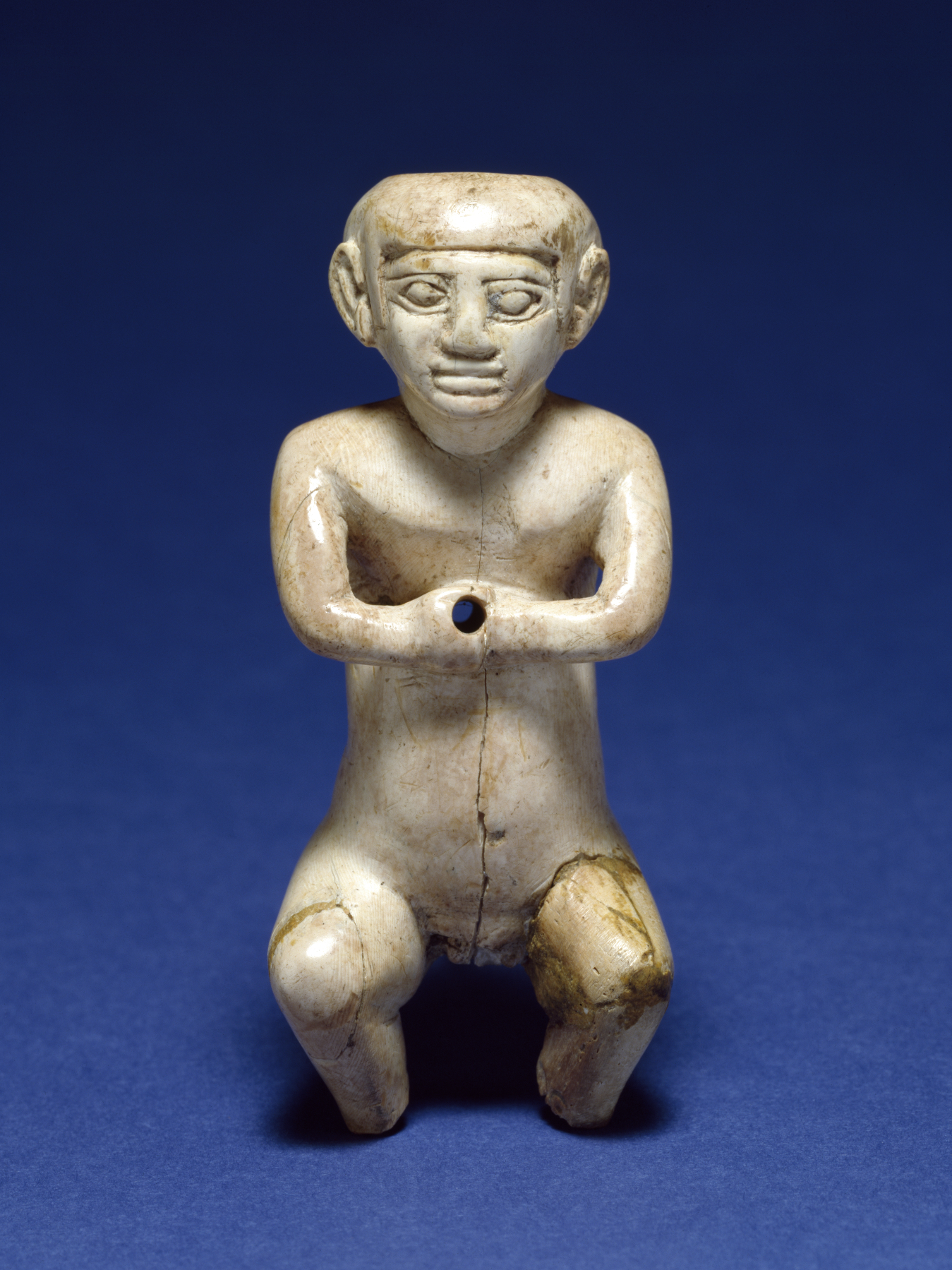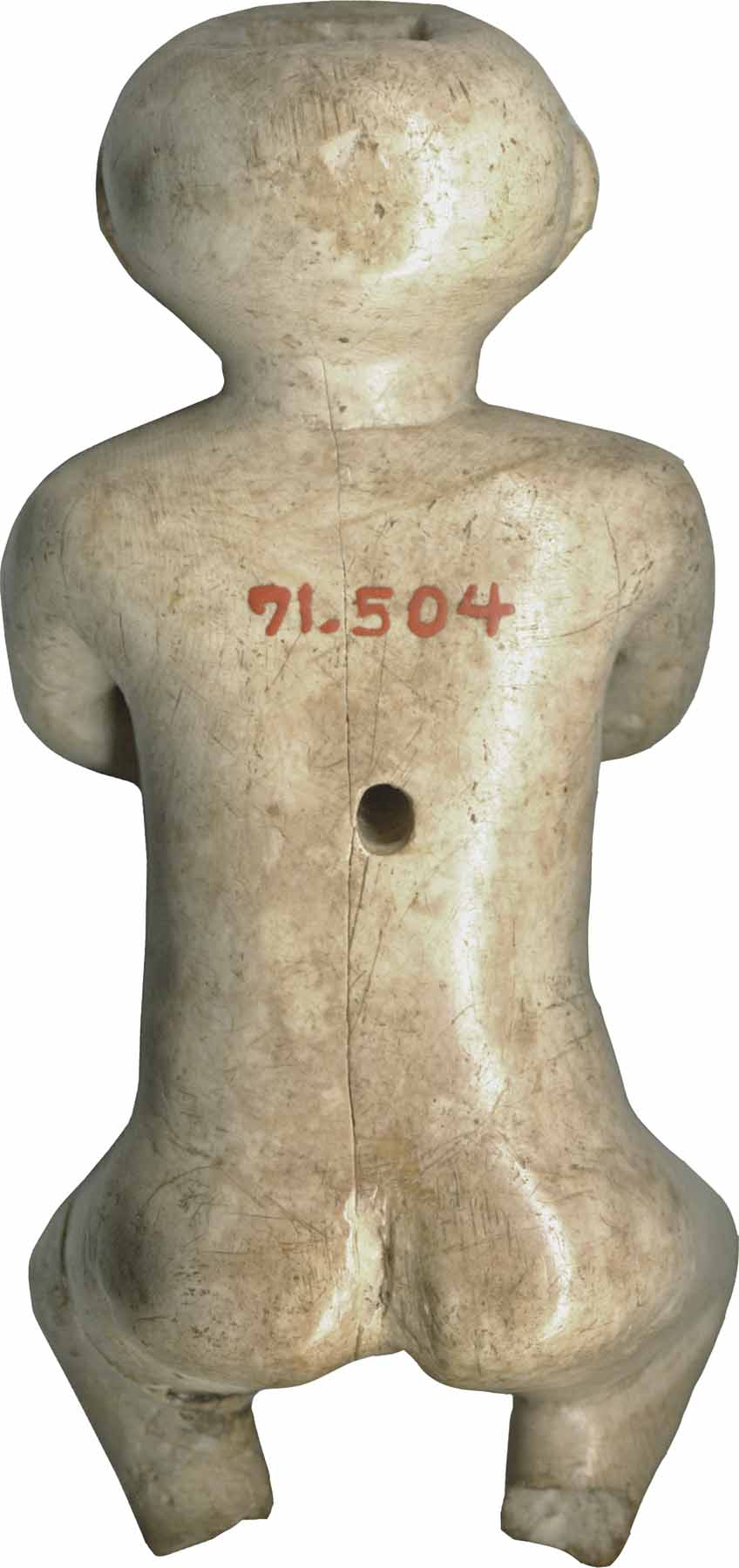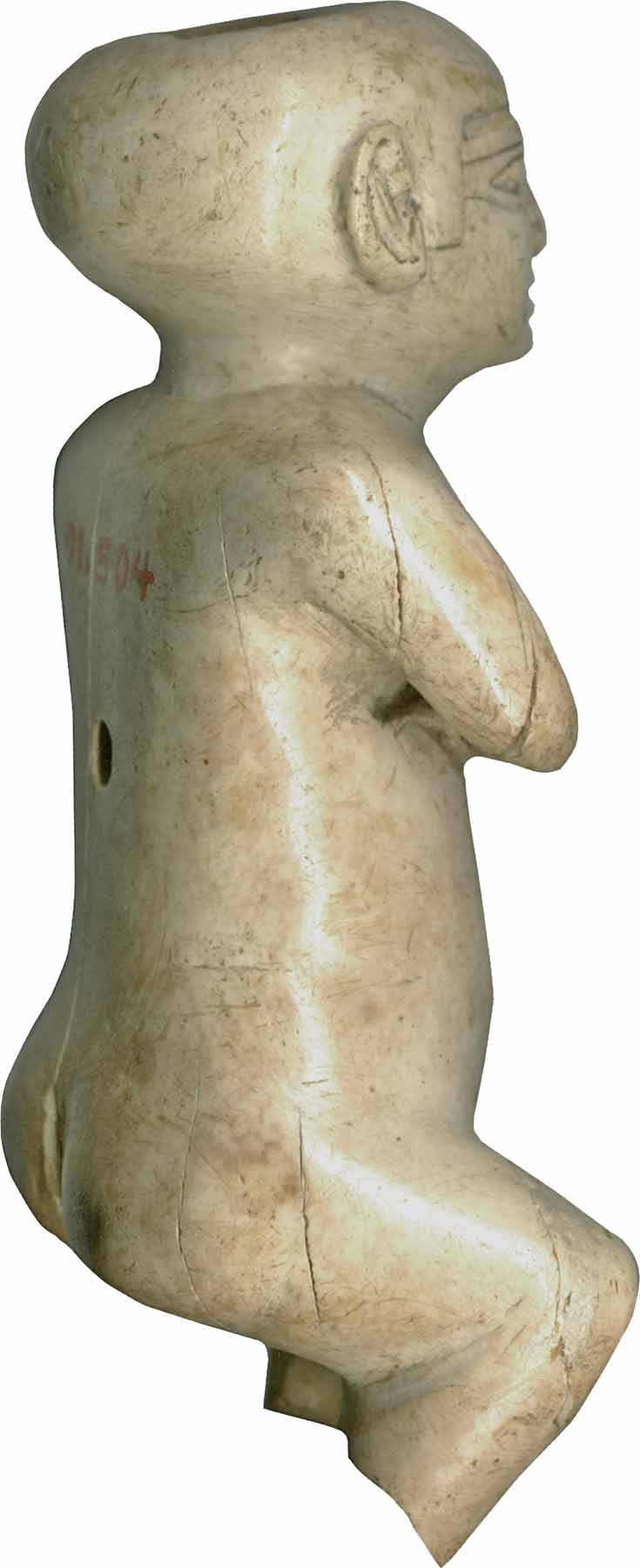Male Figure, Possibly with Dwarfism
(Ancient Egypt and Nubia )
Individuals with dwarfism played an interesting role in Egyptian society since Predynastic times. Dwarfism--a genetic condition characterized by unusually short stature and shortened limbs--is frequently represented in Egyptian tomb reliefs and statues. People with dwarfism were believed, because of their unusual appearance, to have supernatural powers and a special relation to the gods, and some could hold important positions in the administration of the ancient Egyptian government, they also worked as jewelers, and performed in special rituals (in which they were called "god's dancers"). Figurines depicting people with dwarfism were used as amulets and have been found in tombs as well as in ritual places.
This statuette of a nude male seems to be depicted with the characteristics of dwarfism. His hands are clasped and resting on his chest; a cylindrical hole through the hands was once used to hold a staff. A square tapering cavity has been cut into the head, probably for the attachment of a headdress. The feet are broken off above the ankles. The knees are bent and it is possible to interpret the posture as dancing. A grouped statuette of three dancing figures with dwarfism from the Middle Kingdom that was excavated at Lisht displays similar postures.
Provenance
Provenance (from the French provenir, 'to come from/forth') is the chronology of the ownership, custody, or location of a historical object. Learn more about provenance at the Walters.
Henry Walters, Baltimore [date and mode of acquisition unknown]; Walters Art Museum, 1931, by bequest.
Exhibitions
| 2006-2007 | Daily Magic in Ancient Egypt. The Walters Art Museum, Baltimore. |
Geographies
Egypt (Place of Origin)
Measurements
H: 3 1/16 x W: 1 3/16 x D: 7/8 in. (7.8 x 2.99 x 2.3 cm)
Credit Line
Acquired by Henry Walters
Location in Museum
Not on view
Accession Number
In libraries, galleries, museums, and archives, an accession number is a unique identifier assigned to each object in the collection.
In libraries, galleries, museums, and archives, an accession number is a unique identifier assigned to each object in the collection.
71.504










